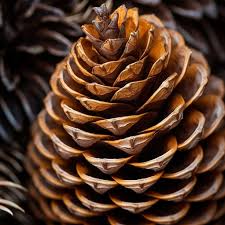By Jessica Jacobs, Contributing Writer
For centuries, humans have sought creative ways to predict the weather, from interpreting cloud formations to observing animal behavior. One of the most fascinating—and lesser-known—methods involves using the humble pine cone. This natural weather tool offers gardeners a simple and insightful way to monitor changes in atmospheric conditions. Here’s how and why it works.
The Science Behind Pine Cones and Weather Prediction
Pine cones are more than just a symbol of the forest; they are natural hygrometers. The scales of a pine cone respond to humidity and moisture in the air, opening in dry conditions and closing when the air becomes more humid. This adaptive behavior ensures the safe dispersal of seeds in optimal conditions, but it also provides a unique way to interpret weather patterns.
- Dry Weather: In arid conditions, the pine cone scales open wide to release seeds, indicating low humidity.
- Wet Weather: Increased moisture causes the scales to close, protecting the seeds from unfavorable conditions.
This simple yet effective mechanism makes pine cones an intriguing tool for weather prediction.

How to Set Up Your Pine Cone Weather Monitor
To get started, follow these easy steps to hang a pine cone in your garden:
- Choose the Right Pine Cone: Select a fresh, intact pine cone, ideally one that has recently fallen from a tree.
- Attach a String: Secure a piece of string or thread to the base of the cone. The string should be long enough to let the cone dangle freely.
- Find a Suitable Spot: Hang the pine cone in a sheltered outdoor location, such as from a tree branch, porch, or pergola, where it can move and react to weather changes without interference.
Interpreting Pine Cone Behavior
Once your pine cone is in place, observe its changes to gain insights into the weather:
- Open Scales: If the scales remain open, it signals dry conditions and likely sunny weather.
- Closed Scales: Tightly closed scales indicate high humidity, suggesting rain, snow, or fog might be approaching.
- Oscillation: If the scales alternate between opening and closing, this could mean the weather is in transition, shifting from dry to humid or vice versa.
- No Change: A lack of movement in the scales may suggest a stable weather pattern, with consistent atmospheric conditions.
A Fun Complement to Modern Tools
While pine cones offer an engaging and natural way to observe weather changes, they are not a replacement for conventional forecasting tools. Weather prediction is a complex science, and the pine cone’s behavior should be viewed as a fun and educational supplement to modern methods like radar or weather apps.
By incorporating this practice into your garden, you’ll not only gain a deeper appreciation for nature’s wonders but also enjoy a small window into the ever-changing dance of the atmosphere. So why not give it a try? Hang a pine cone today and let nature’s secrets unfold right in your backyard!
